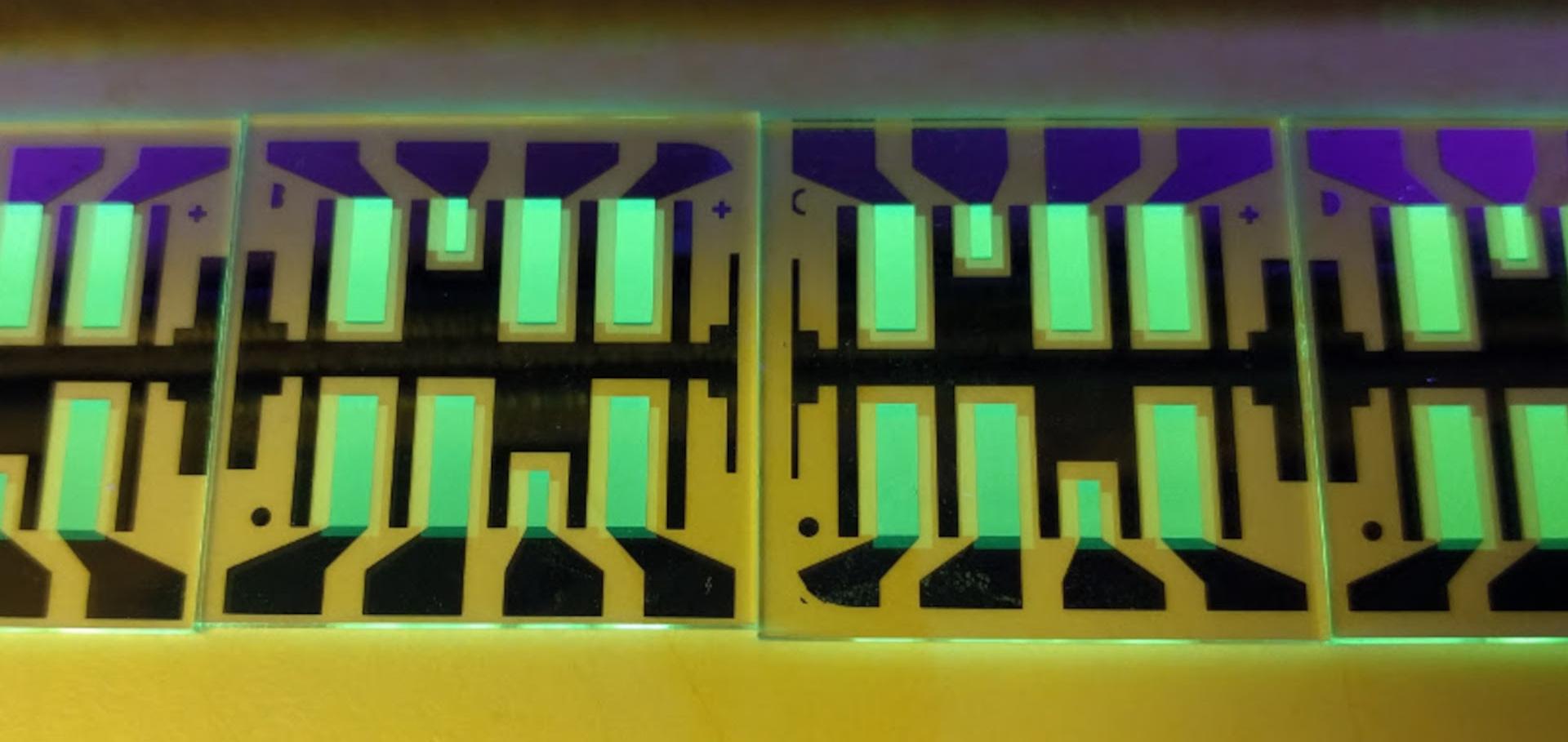Carbon nanotubes for quantum dot photovoltaics with enhanced light management and charge transport
ACS Photonics American Chemical Society 5:12 (2018) 4854-4863
Abstract:
Colloidal quantum dot (CQD)-based photovoltaics are an emerging low-cost solar cell technology with power conversion efficiencies exceeding 10%, i.e., high enough to be interesting for commercialization. Well-controlled and understood charge carrier transport through the device stack is required to make the next step in efficiency improvements. In this paper, polymer-wrapped single-walled carbon nanotube (SWNT) films embedded in an insulating poly(methyl methacrylate) (PMMA) matrix and capped by a thermally evaporated Au electrode are investigated as a composite hole transport layer and optical spacer. Employing transient absorption spectroscopy we show that the SWNTs enhance the charge transfer rate from CQD to CQD, ZnO, or SWNT. In order to pinpoint the underlying mechanism for the improvement, we investigate the energetics of the junction by measuring the relative alignment of the band edges, using Kelvin probe and cyclic voltammetry. Measuring the external quantum efficiency and absorption we find that the improvement is not mainly from electronic improvements but from enhanced absorption of the CQD absorber. We demonstrate experimentally and theoretically, by employing a transfer-matrix model, that the transparent PMMA matrix acts as an optical spacer, which leads to an enhanced absorption in the absorber layer. With these electronic and optical enhancements, the efficiency of the PbS CQD solar cells improved from 4.0% to 6.0%.Hole Transport in Low-Donor-Content Organic Solar Cells.
The journal of physical chemistry letters (2018) 5496-5501
Abstract:
Organic solar cells with an electron donor diluted in a fullerene matrix have a reduced density of donor-fullerene contacts, resulting in decreased free-carrier recombination and increased open-circuit voltages. However, the low donor concentration prevents the formation of percolation pathways for holes. Notwithstanding, high (>75%) external quantum efficiencies can be reached, suggesting an effective hole-transport mechanism. Here, we perform a systematic study of the hole mobilities of 18 donors, diluted at ∼6 mol % in C60, with varying frontier energy level offsets and relaxation energies. We find that hole transport between isolated donor molecules occurs by long-range tunneling through several fullerene molecules, with the hole mobilities being correlated to the relaxation energy of the donor. The transport mechanism presented in this study is of general relevance to bulk heterojunction organic solar cells where mixed phases of fullerene containing a small fraction of a donor material or vice versa are present as well.Modification of the fluorinated tin oxide/electron-transporting material interface by a strong reductant and its effect on perovskite solar cell efficiency
Molecular Systems Design and Engineering Royal Society of Chemistry 3:5 (2018) 741-747
Abstract:
To date, the most efficient hybrid metal halide peroskite solar cells employ TiO2 as electron-transporting material (ETM), making these devices unstable under UV light exposure. Replacing TiO2 with fullerene derivatives has been shown to result in improved electronic contact and increased device lifetime, making it of interest to assess whether similar improvements can be achieved by using other organic semiconductors as ETMs. In this work, we investigate perylene-3,4:9,10-tetracarboxylic bis(benzimidazole) as a vacuum-processable ETM, and we minimize electron-collection losses at the electron-selective contact by depositing pentamethylcyclopentadienyl cyclopentadienyl rhodium dimer, (RhCp*Cp)2, on fluorinated tin oxide. With (RhCp*Cp)2 as an interlayer, ohmic contacts can be formed, there is interfacial doping of the ETM, and stabilized power conversion efficiencies of up to 14.2% are obtained.Key Tradeoffs Limiting the Performance of Organic Photovoltaics
Advanced Energy Materials (2018)
Abstract:
© 2018 WILEY-VCH Verlag GmbH & Co. KGaA, Weinheim. 2017 saw the publication of several new material systems that challenge the long-held notion that a driving force is necessary for efficient exciton dissociation in organic photovoltaics (OPVs) and that a loss of ≈0.6 eV between the energy of the charge transfer state E ct and the energy corresponding to open circuit is general. In light of these developments, the authors combine insights from device physics and spectroscopy to review the two key tradeoffs limiting OPV performances. These are the tradeoff between the charge carrier generation efficiency and the achievable open circuit voltage (V oc ) and the tradeoff between device thickness (light absorption) and fill factor. The emergence of several competitive nonfullerene acceptors (NFAs) is exciting for both of these. The authors analyze what makes these materials compare favorably to fullerenes, including the potential role of molecular vibrations, and discuss both design criteria for new molecules and the achievable power conversion efficiencies.Femtosecond dynamics of photoexcited C60 films
Journal of Physical Chemistry Letters American Chemical Society (2018)


